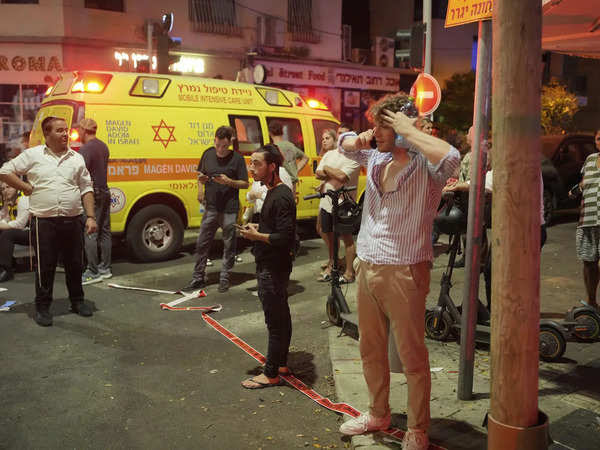
Yemen’s Houthi rebels on Friday claimed responsibility for an early morning drone believed to have exploded above Tel Aviv, leaving at least 10 injured and one dead. The aerial strike rumbled through the streets causing shards of shrapnel to rain down and leaving a large explosion radius, authorities said. It was not immediately clear how the strike evaded Israel’s air defenses or how Israel might respond. Israel’s military said that they were increasing air patrols after the incident.
The Houthis have repeatedly launched drones and missiles toward Israel throughout the nine-month-long war, in sympathy with Hamas. But until Friday, all were intercepted by either Israel or Western allies with forces stationed in the region.
The group lauded the drone’s ability to bypass Israel’s air defenses and said they aim to reach deep into Israel in response to the war in Gaza between Israel and Hamas militants, which is now in its ninth month.
The Houthi strike hit hours after Israel’s military confirmed one of its airstrikes had killed a Hezbollah commander and other militants in southern Lebanon. Israel has so far not made attacks on the Houthis, allowing its allies instead to take the lead as it focuses its efforts on the war in Gaza and ongoing fighting with Lebanon’s Hezbollah militant group.
It comes as international mediators continue to hold out hope for a cease-fire agreement, pushing Israel and Hamas toward a phased deal that would halt fighting and free about 120 hostages held by the militant group in Gaza.
The prospects a deal could improve as Israeli leaders signal their operation underway in Rafah is close to finished. However, fears of potential escalation resurfaced on Thursday after Israel’s far-right national security minister, Itamar Ben-Gvir, visited Jerusalem’s most sensitive holy site on Thursday to pray for the return of Israeli hostages, he said, “without a reckless deal, without surrendering.”
Local police in Tel Aviv said that the Friday blast sounded at around 3:10 a.m., reverberating to nearby cities and physically injuring at least 10 people. Tel Aviv District Commander Peretz Amar said officers could not locate the point of contact, suggesting the explosion occurred in the air.
“The force of the explosion caused damage that is not great but is spread over a large area. At the moment we don’t know what the object was,” Amar said.
Israel possesses a multilayered aerial defense system, capable of intercepting threats ranging from long-range ballistic missiles to drones and short-range missiles. These systems have intercepted thousands of projectiles throughout the war. But officials warn they are not 100% effective, and the systems appear to have struggled against small and hard-to-detect attack drones. It was not known which, if any, system was deployed.
Like Hamas, Hezbollah and the Houthis are backed by Israel’s arch enemy, Iran. Israel for the most part also has avoided a direct confrontation with Iran throughout the war. Iran launched hundreds of drones and missiles at Israel during a single incident in April in response to Israel’s alleged assassination of a pair of Iranian generals in Syria at the time.
The war in Gaza, which was sparked by Hamas’ Oct. 7 attack on southern Israel, has killed more than 38,600 people, including women and children, according to the territory’s Health Ministry. The war has created a humanitarian catastrophe in the coastal Palestinian territory, displaced most of its 2.3 million population and triggered widespread hunger.
Hamas’ attack last year’s October killed 1,200 people, mostly civilians, and militants took about 250 hostage. About 120 remain in captivity, with about a third of them believed to be dead, according to Israeli authorities.
KOIKI Media bringing the world 🌎 closer to your door step
